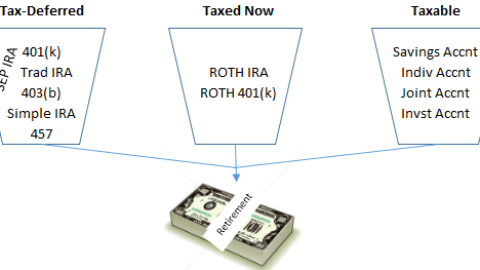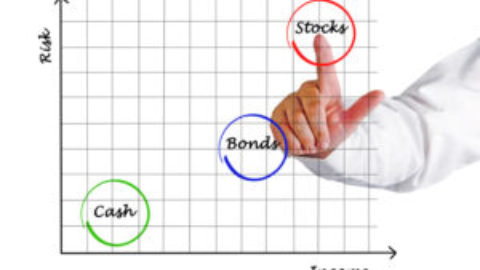 Frustrated? Keep Reading
Frustrated? Keep Reading
By: Steven Higgins, Financial Advisor, Principal
Investors are looking at their monthly statements and wondering how 2018 is going to pull off the 4th quarter comeback and finish the year with decent gains. 2018 has been marked with increased volatility relative to 2017. However, in 2016 and 2015, investors saw volatility levels similar to what we are seeing today. It is as though last year lulled investors to sleep. Now we are reminded once again that gains are often earned with patience and sleepless nights.
Not ironically, we held an event in our office last week called Your Own Worst Enemy: Understanding the Critical Role of Behavioral Finance in Your Strategy. We discussed how fear and greed can negatively impact an investor’s ability to meet goals. We all know that diversity and patience are more practical than fear and greed and more often lead to investing success however neither diversity or patience feels good right now. Keep reading.
Patience
It has never felt good to be told “Be Patient.” It didn’t feel good when you were six years old and it doesn’t feel good now. When you were a kid you were just a ball of frustrated squirming, now as an adult, you can do something about it, even if it means violating what you know to be foundational financial disciplines. The S&P 500, the index that measures large cap stocks in the U.S., is up just 3% this year. After a strong 2017, 3% seems like a pittance. The feeling is reminiscent of the spring of 2016 where the S&P 500 was basically flat for the previous two years. I felt like if I said, “Be Patient” one more time, I was going to slap myself. Fast forward, the S&P 500 is up over 47% since then. The real truth is, it can get so much worse than a year or two of “flat” markets. Every now and then a correction will turn into a Bear Market. In fact, 1 out of 5 corrections become a Bear Market with average declines of 23% in the S&P 500. That being said, being patient has still paid off 100% of the time as every Bear Market since 1960 (there have been 18 of them) has immediately started a new Bull Market en route to setting new highs. The key way to mitigate some of the bite of a Bear Market is……diversification. Keep reading
Diversification
This might be the most boring brilliant concept of all time. And, if you think people hate being told to “be patient” you should see how frustrated people get with their diversified portfolios. It’s the can’t win plan that always wins. The idea behind diversification (better known as Modern Portfolio Theory (MPT) developed by Harry Markowitz in 1952) is that there is an Efficient Frontier wherein an investor can capture a limited amount of the upside of a market and a limited amount of the downside of a market while actually doing better than the market over time.
How much do you hate this right now? I understand. Keep reading.
 What this whole Efficient Frontier thing means is you’re always going to be frustrated. At our event, my partner, Allie Schmidt, explained a brilliant chart she made. Basically, it shows that when the markets are down, you’re still down and when the markets are up, you’re not up as much. Sounds fun right? The punch line is… you actually make more over time and are in a better position to meet your goals. Which is the whole point, right?
What this whole Efficient Frontier thing means is you’re always going to be frustrated. At our event, my partner, Allie Schmidt, explained a brilliant chart she made. Basically, it shows that when the markets are down, you’re still down and when the markets are up, you’re not up as much. Sounds fun right? The punch line is… you actually make more over time and are in a better position to meet your goals. Which is the whole point, right?
We are in the longest S&P 500 Bull Market EVER so I understand that this whole diversification thing is wearing thin on folks. Everybody talks abut the S&P 500 but as you know a diversified portfolio isn’t benchmarked to just the S&P 500. In the chart below, I’ve compared the components of a diversified portfolio to the diversified portfolio itself for 2018 year-to-date. You can see the S&P 500 topping the charts at 3.08% and the other components all negative and down more than the diversified portfolio itself. The S&P 500 makes up abut 38% of this diversified portfolio. Keep reading.

The reality is, the diversification has done a great job protecting the investor from more protracted losses at the cost of being simply the runner up to only the S&P 500 year-to-date. There have always been periods of time where it doesn’t feel like “diversification” is working. As Allie explained to our event attendees last week, “It doesn’t work every time, it works over time.”
We spend a lot of time helping our clients create income plans, tax efficiencies, legacy plans, and more. However, the biggest role we play is to to prepare our clients to handle the reality that emotions can impede their ability to meet their financial goals. Everyone is a victim of their own emotions from time to time and we take serious the responsibility to be resolute for our clients.
One of the most important parts of preparing yourself and your portfolio for periods of volatility is to go through the process of creating a MyStrategy Personal Investment Policy (PIP). The process of creating a PIP aligns your goals, assets, and expectations in order to identify potential conflicts that may arise in the future. We would certainly be happy to explain this process in more depth. Please don’t hesitate to reach out.
Chart source: YCharts
The opinions voiced in this material are for general information only and are not intended to provide specific advice or recommendations for any individual. All performance referenced is historical and is no guarantee of recommendations for any individual. All performance referenced is historical and is no guarantee of future results. The opinions expressed in this material do not necessarily reflect the views of LPL Financial. The economic forecasts set forth in this material may not develop as predicted and there can be no guarantee that strategies promoted will be successful. There is no guarantee that a diversified portfolio will enhance overall returns or outperform a non-diversified portfolio. Diversification does not protect against market risk. All investing, including stocks, involves risk including loss of principal. Bonds are subject to market and interest rate risk if sold prior to maturity. Bond values will decline as interest rates rise and bonds are subject to availability and change in price. The Dow Jones Industrial Average is comprised of 30 stocks that are major factors in their industries and widely held by individuals and institutional investors. The S&P 500 is a stock market index that tracks the 500 most widely held stocks on the New York Stock Exchange or NASDAQ. All indices are unmanaged and may not be invested into directly. Any named entity, HD Wealth Strategies, and LPL Financial are not affiliated. This information is not intended to be a substitute for specific individualized advice.








